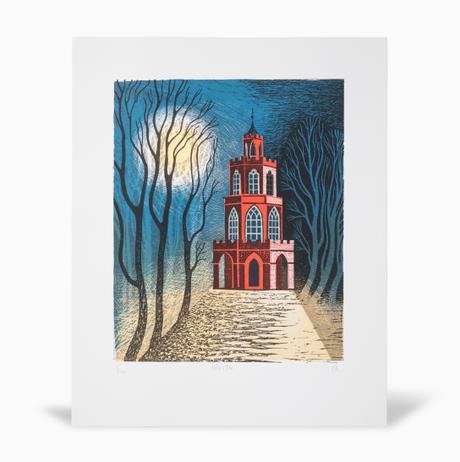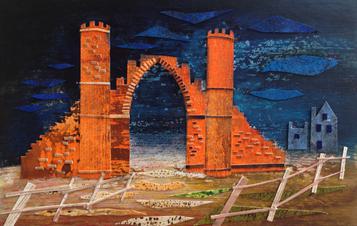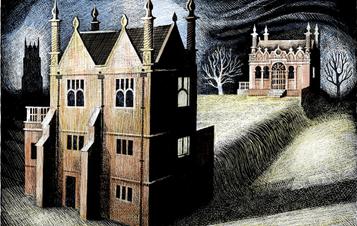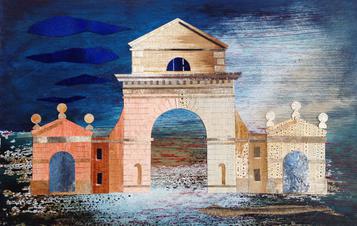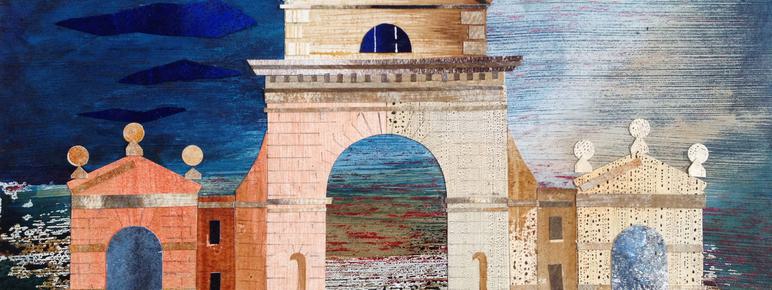
About Ed Kluz: Sheer Folly – Fanciful Buildings of Britain
The largest solo exhibition to date by artist, illustrator and printmaker Ed Kluz, Sheer Folly – Fanciful Buildings of Britain celebrates the eccentric, uncanny and overlooked follies, temples and towers that dot the British landscape.
Featuring original paper collages, scraper boards and prints, the exhibition takes inspiration from fantastical and fanciful buildings across the UK, including the artist’s native North Yorkshire and YSP’s 500-acre, 18th-century parkland. A limited-edition print, exclusive to the Park, features the lost Belle Vista tower which once stood in the grounds of Bretton Hall, now home to YSP.
Kluz’s work explores contemporary perceptions of the past through the reimagining of historic landscapes, buildings and objects. The ideas of early Romanticism, the Picturesque movement and antiquarian representations of topography and architecture underpin his approach to image making.
Vibrant, meticulous and sometimes dark aspects of Kluz’s work reflect the many different characters and styles of British architecture over the last 500 years. In Sheer Folly – Fanciful Buildings of Britain, the artist depicts a varied collection of some of the most intriguing oddities, often hidden and forgotten, within the folly genre. Celebrated and familiar buildings also feature, including a series of six prints directly inspired by The Landmark Trust properties.
All works in Sheer Folly – Fanciful Buildings of Britain are available to buy, along with an exclusive range of merchandise for YSP Shop including a silk scarf, tote bag, mugs and side plate.
You might also like
More- Profile
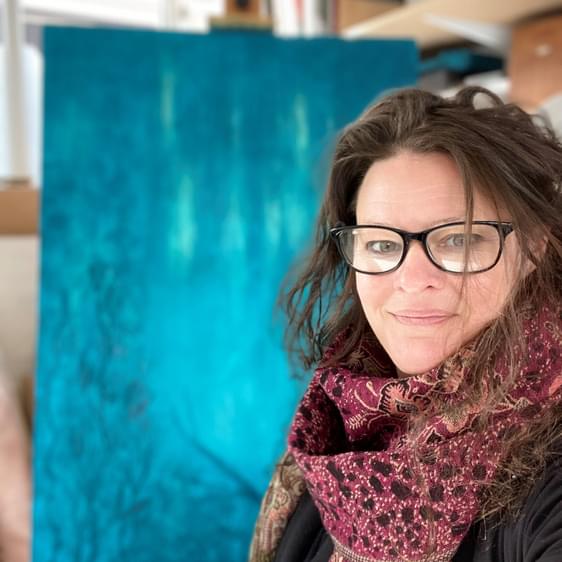
Sarah Jane Palmer
Artist Educator - Art Outdoors
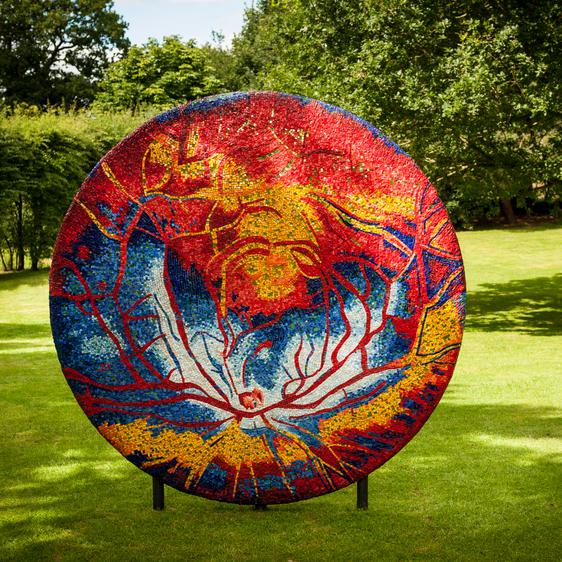
Marialuisa Tadei: Night and Day
Tadei’s works commonly explore mystical and spiritual views inspired by anatomy and nature, and uses geometric forms, such as circles, to symbolise eternity. The two-sided mosaic Night and Day (Incarnazione) is an extension of the artist’s Oculus Dei series (1998-2008), colourful and abstract disks made of glass and marble that can be interpreted as the details in human eyes. - Art Outdoors

Anya Gallaccio: Blessed
- Art Outdoors

Damien Hirst: The Virgin Mother
Damien Hirst's The Virgin Mother stands at 10 metres tall and is the tallest sculpture at YSP.
